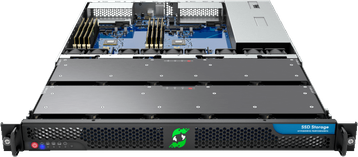Who fancies a game of The Great British Moan Off, The Fake News Game (Kanye Edition), or Awkward Family Photos? Or what about a motherboard chopping board for the kitchen or Connect 4 fridge magnets?
All these, plus a lot of more normal stuff, are available on The Hut Group’s I Want One of Those (IWOOT) website – one of scores of THG’s ecommerce brands that are all, essentially, run from the same end-to-end platform, THG Ingenuity. Now, in addition to running all its own commerce sites on THG Ingenuity, the company has also opened it up to enable third-parties to use the platform, too, via THG Hosting.
All these, plus a lot of more normal stuff, are available on The Hut Group’s I Want One of Those (IWOOT) website – one of scores of THG’s ecommerce brands that are all, essentially, run from the same end-to-end platform, THG Ingenuity. Now, in addition to running all its own commerce sites on THG Ingenuity, the company has also opened it up to enable third-parties to use the platform, too, via THG Hosting.
This will provide partners with ecommerce, warehouse and infrastructure software to support their own online sales.
That, of course, is easier said than done, but is the £1.6 billion ($2.2bn) company’s next step following its London Stock Exchange flotation in September last year. “Our focus right now, post-IPO, is in building a resilient, global and mission-critical infrastructure that can rapidly scale in-line with the exponential growth we’re experiencing,” THG chief technology officer Schalk Van Der Merwe told DCD in a white paper published earlier this year.
He continued: “At the same time, we need to ensure we’re supporting the corporate goal of becoming carbon neutral. As you can imagine, this poses several challenges and informs how we evaluate the vendors we choose to work with.”
Obviously, a big ecommerce player with aspirations to become a major ecommerce platform in its own right needs highly scalable hardware and infrastructure every bit as reliable as the platform itself, especially when those aspirations are global.
At the same time, Van Der Merwe wanted THG’s global storage infrastructure to be based on a platform that wouldn’t tie the company down to a single vendor, with all the hefty software licensing fees that might imply. Hence, support for the Ceph open-source filesystem was a key requirement.
It therefore selected SoftIron HyperDrive software-defined storage technology as the basis for its storage infrastructure, which now spans three regions, with the added benefit that SoftIron’s power-efficient hardware would also help THG achieve its sustainability goals.
“By designing and building task specific appliances from the ground up that are both high performance and ultra efficient, we can simultaneously reduce the power requirement and reduce the need for cooling,” Moloney wrote for DCD earlier this year. This is achieved, he added, by “designing and building from the ground up, rather than using generic, inefficient sub-assemblies sourced from across the globe as other vendors do.”
The other side of the equation, of course, is the Ceph storage software. “While open-source solutions may seem like a ‘science project’ for non-tech companies, for us, being cloud-agnostic, free of lock-in and achieving ‘cloud native without cloud’ is all strategically important within our architecture,” said THG’s Van Der Merwe. SoftIron’s approach, he continued, had made Ceph more viable “and manageable at scale for enterprises like ours,” he added.
In addition, SoftIron’s implementation reduces the complexity of Ceph, while the power efficiency and environmental benefits of purpose-designed hardware were the cherry on top. SoftIron claims power savings of up to 80 per cent compared to conventionally designed rivals.
Big package
Ceph provides a number of key features in an open-source package: it is a self-healing, highly scalable storage platform that can manage exabytes of data with zero lost bytes and no downtime, if architected correctly. Indeed, it has been scale-tested to more than one billion objects.
The Ceph Object Gateway enables users to host scalable data storage ‘buckets’ in a similar way to those provided by Amazon S3 and OpenStack Swift, accessible via a REST API, making them suitable for cloud-based applications and big-data storage.
“Today, our SoftIron Ceph deployment spans three regions: America, Great Britain and Germany, underpinning our Openstack-as-a-Service APIs, and ‘vanilla’ bare-metal offerings that power well-known gaming, streaming and hosting brands,” said Van Der Merwe.
For THG, opening up its ecommerce platform to third parties, as well as supporting scores of its own brands, a genuinely open platform was a key prerequisite. “Besides powering object storage use cases such as warehouse data replication and backup solutions based on SoftIron technology partners like Veeam, we see strong interest in direct SoftIron Ceph integrations with Kubernetes workloads.”
SoftIron API integrations, such as Kubernetes’ common storage interface (CSI), have also helped speed up development and made life easier for operations teams. “As we further invest we will be exposing a wider range of powerful API endpoints that our customers and partners can use as integration ‘weapons’ alongside our managed ecommerce platform,” said Van Der Merwe.
More...
-

THG Unlocks Infinite Scalability, Resilience & Efficiency with SoftIron’s Open Source-Based Storage Solution
Download this free case study from SoftIron.
-

Sponsored 5G and the Edge data center revolution
Organizations have always run IT at ‘the edge’, such as their branch offices or retail outlets. But 5G will make the edge data center potentially revolutionary, says SoftIron’s Craig Chadwell
-

Sponsored Hardware matters
Genuine sustainability requires data centers to focus on power-efficient hardware as much as big renewable power contracts, argues SoftIron’s Andrew Moloney


